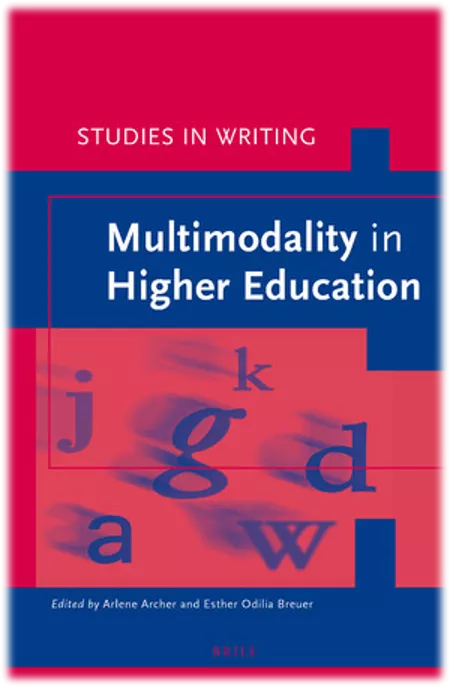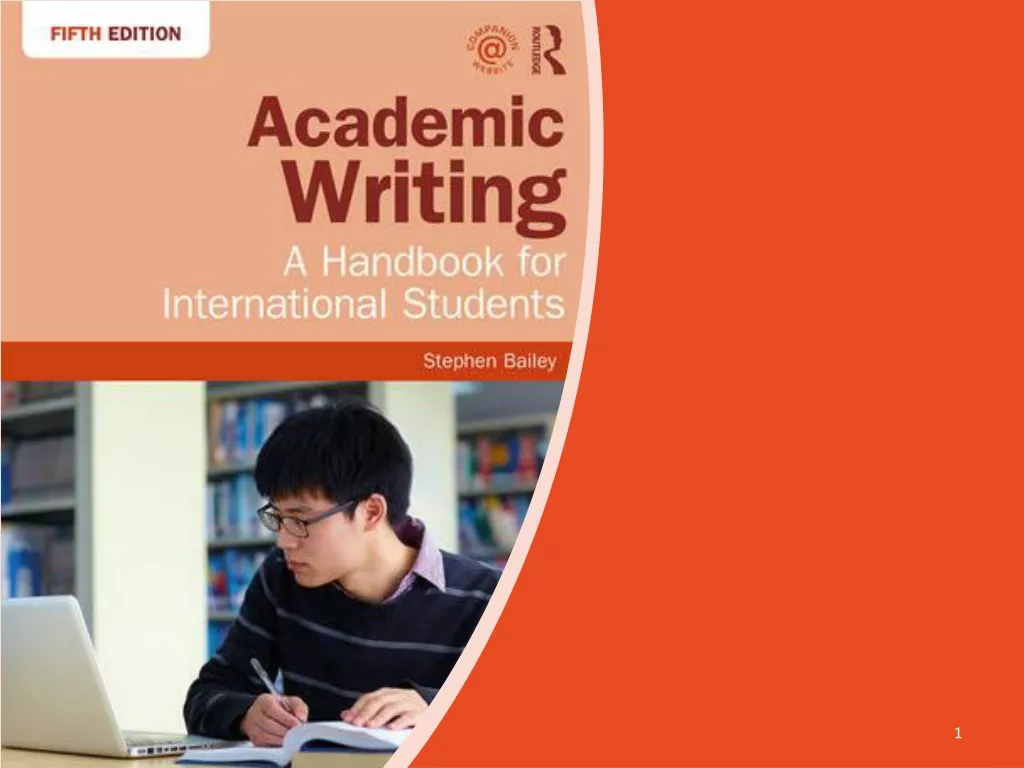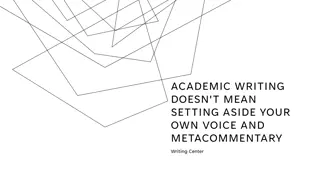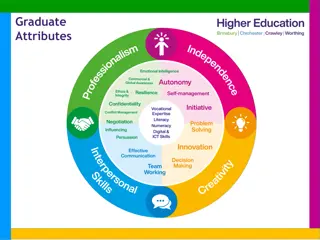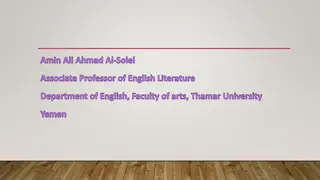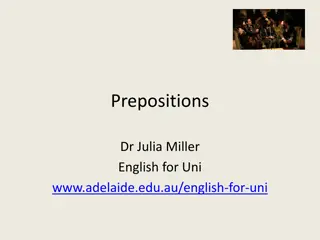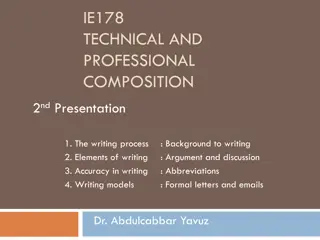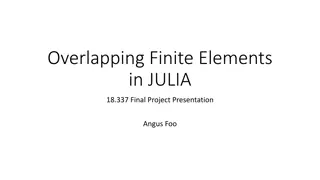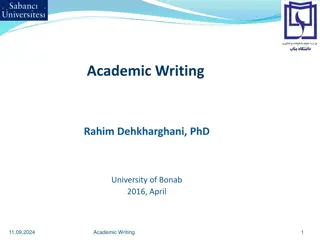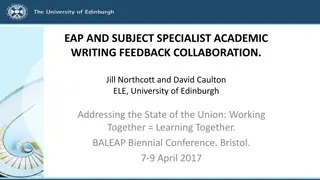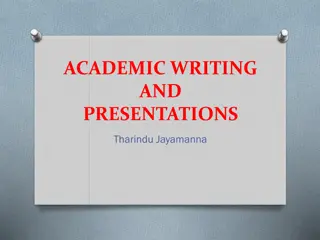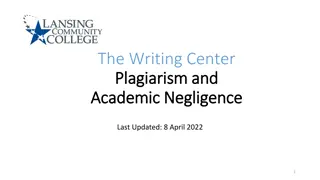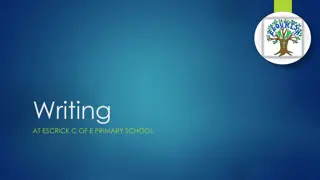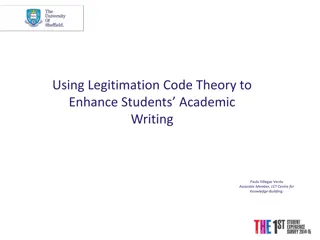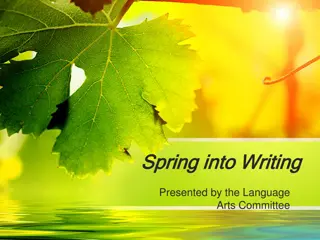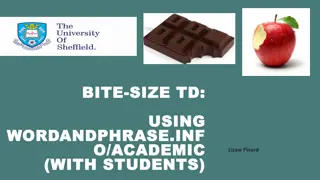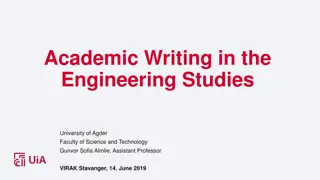Complexity of Academic Writing and Non-Linearity
The concept of academic writing is examined, highlighting its contestable nature and emergent quality. The linear nature of English writing and the importance of non-linearity in academic texts are discussed. Various scholars in diverse fields contribute to the discourse, emphasizing the multiplicity of causal factors in complex systems.
Download Presentation

Please find below an Image/Link to download the presentation.
The content on the website is provided AS IS for your information and personal use only. It may not be sold, licensed, or shared on other websites without obtaining consent from the author.If you encounter any issues during the download, it is possible that the publisher has removed the file from their server.
You are allowed to download the files provided on this website for personal or commercial use, subject to the condition that they are used lawfully. All files are the property of their respective owners.
The content on the website is provided AS IS for your information and personal use only. It may not be sold, licensed, or shared on other websites without obtaining consent from the author.
E N D
Presentation Transcript
What makes writing academic April 12 2019 BALEAP LEEDS Julia Molinari PhD Researcher and EAP Tutor University of Nottingham, UK julia.molinari@nottingham.ac.uk
what is seen as academic writing is contestable and always emergent A. Archer & Breuer, 2016a, p. 2
English is described as linear rather than digressive The paragraph begins with a general statement of its content, and then carefully develops that statement by a long series of [ ] illustrations. While it is discursive, the paragraph is never digressive. There is nothing in this paragraph that does not belong here; nothing that does not contribute significantly to the central idea. The flow of ideas occurs in a straight line from the opening sentence to the last sentence (Kaplan, 1980 [1966], p. 14)
Dr Nick Sousanis, Associate Professor Comics Studies, Liberal Studies, Humanities
Dr A.D. Carson, Associate Professor of Hip Hop and the Global South
Dr Piper Alexis Harron, Temporary Associate Professor of Mathematics
What makes these texts academic? non-linearity
A complex system is one in which there is a multiplicity of causal factors contributing to the dynamics of the system, in which there are causal interactions among the underlying causal factors, and in which causal interactions are often non-linear. Non- linearity is important here, because it implies that a small change in one or more factors may lead to very large changes in the outcome (Little, 2018)
Dr A.D. Carson, Associate Professor of Hip Hop and the Global South
What makes these texts academic? open systems
Academic Writing is an Open System energy and matter can be exchanged between the system and its environment characterised by several variables which have varying degrees of causal relevance
What makes these texts academic? emergence
Academic Writing is Emergent a purely physical system, composed exclusively of bits of matter, when it reaches a certain degree of complexity in its structural organisation, can begin to exhibit genuinely novel properties not possessed by its simpler constituents Kim, 206, p. 548
human action [is] not governed by behaviouristic laws, nor as a conditioned response to pre-determined social structures, but as individual agency Human agency is both enabled and limited by the opportunities and constraints afforded by social structures, at the same time maintaining the fabric of these social structures, which are fairly stable, but capable of gradual change [ ]. This means that, while learner writers often find themselves operating in a given (but not fixed or static) context, where academic writing is an undisputed fact of academic life, they are able to make efforts to empower themselves (Pratt, 2011, pp. 27-28)
Crunch What makes writing academic is contestable and emergent is its non-linearity is its complexity within an open system is its non-reductive and emergent quality What makes writing academic emerges from an interaction between the Writer and their Textual Environment This can allow us to explain diversity and novelty
Bibliography Archer, A., & Breuer, E. (2016a). A Multimodal Response to Changing Communication Landscapes in Higher Education. In A. Archer & E. Breuer (Eds.), Multimodality in Higher Education (Vol. 33, pp. 1-17). Leiden/Boston: Brill. Collier, A. (1994). Critical realism: an introduction to Roy Bhaskar's philosophy. London: Verso. Judd, D. (2003). Critical realism and composition theory. London: Routledge. Kim, J. (2006). Emergence: Core Ideas and Issues. Synthese, 151(3), 547-559. Retrieved from http://www.jstor.org.ezproxy.nottingham.ac.uk/stable/20118828. Little, D. (2018). Social generativity and complexity. Retrieved from https://understandingsociety.blogspot.com/2018/05/social-generativity-and- complexity.html Pratt, D. (2011). Modelling written communication: a new systems approach to modelling in the social sciences. Dordrecht: Springer. Rose, M. (1985). The Language of Exclusion: Writing Instruction at the university. College English, 47(4), 341-359. Retrieved from https://www.jstor.org/stable/376957.




